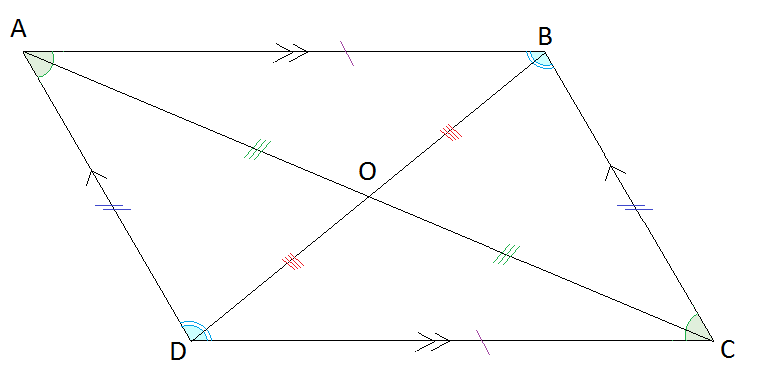Geometry

Hong Kong
Stage 1 - Stage 3
Lengths in Quadrilaterals
Lesson
As we have seen in Types of Quadrilaterals there are specific geometric properties relating to sides and angles that explicitly define certain shapes.
Some quadrilaterals have specific SIDE properties:
| Opposite sides in a parallelogram are parallel
Opposite sides in a parallelogram are equal
|
 |
| Opposite sides in a rectangle are parallel
Opposite sides in a rectangle are equal
|
 |
| All sides of a square are equal
Opposite sides in a square are parallel
|
 |
| Opposite sides in a rhombus are parallel
All sides of a rhombus are equal
|
 |
| 1 pair of opposite parallel sides |  |
| An isosceles trapezium (trapezoid) has one pair of opposite sides equal
One pair of opposite parallel sides
|
 |
| 2 pairs of equal adjacent sides |  |
Diagonals in quadrilaterals
In addition to the properties already studied, the diagonals of some quadrilaterals also have special properties.
| Diagonals of a parallelogram bisect each other ($BO=DO$BO=DO &$AO=CO$AO=CO) |  |
| Diagonals of a rectangle bisect each other ($BO=AO$BO=AO= $DO=CO$DO=CO )
Diagonals in a rectangle are equal ($BD=CA$BD=CA)
|
 |
| Diagonals of a square are equal ($AC=BD$AC=BD)
Diagonals of a square bisect each other ($BO=DO$BO=DO = $AO=CO$AO=CO )
|
 |
| Diagonals of a rhombus bisect each other ($BO=DO$BO=DO and $AO=CO$AO=CO) |  |
| The longest diagonal of a kite bisects the shorter diagonal ($BO=OD$BO=OD) |  |
| Diagonals of an isosceles trapezium (trapezoid) are equal ($DB=AC$DB=AC) |  |
The following applet will allow you to manipulate different quadrilaterals using the blue points and see the properties appear with regards to the diagonals.
Worked Examples
Question 1
ABCD in the adjacent figure is a parallelogram. Find $x$x and give reasons.
Loading video...
Question 2
In kite VRTU:
a) Which pairs of sides are equal?
Loading video...
b) Find the size of $\angle VRU$∠VRU, give reasons.
Loading video...